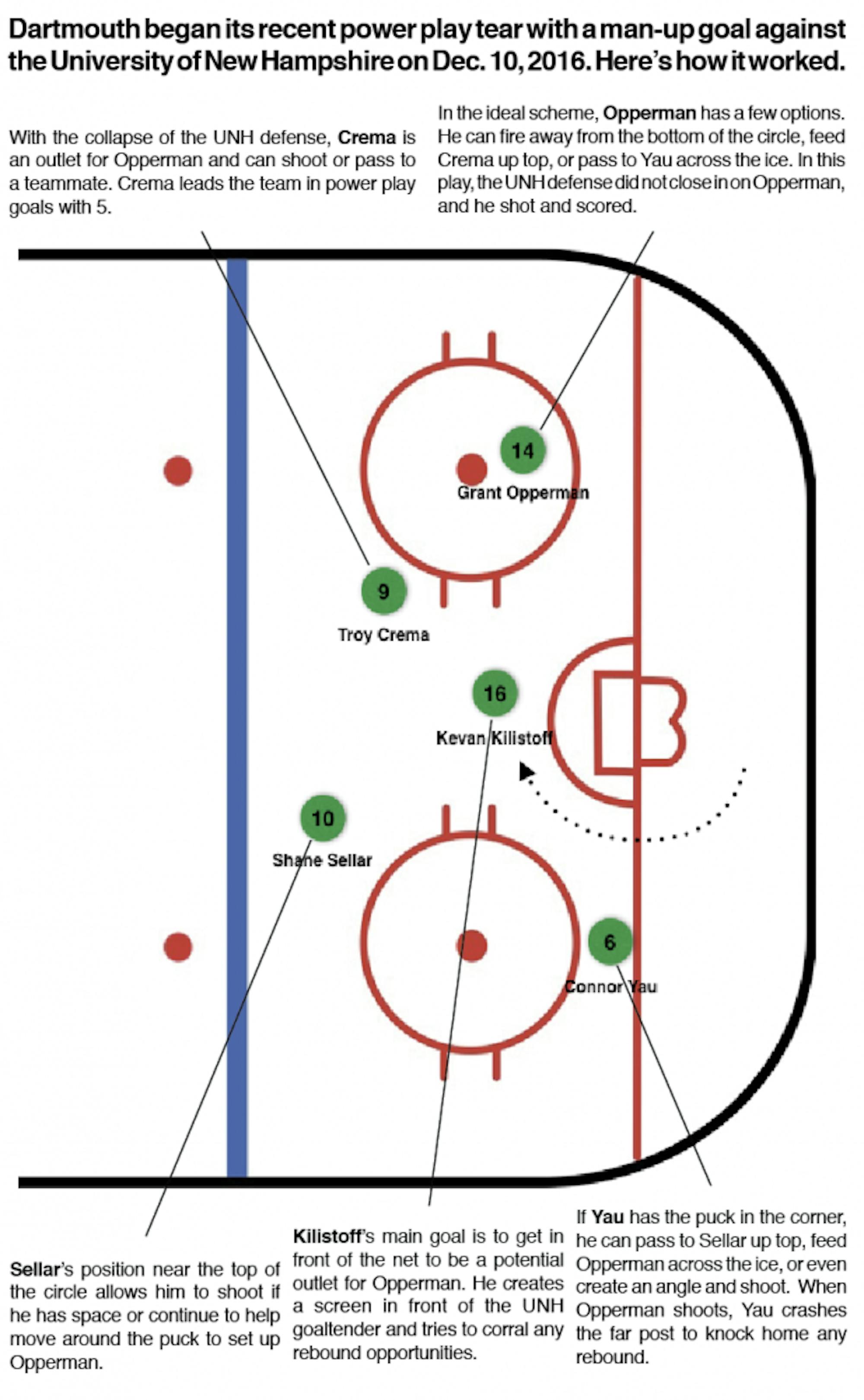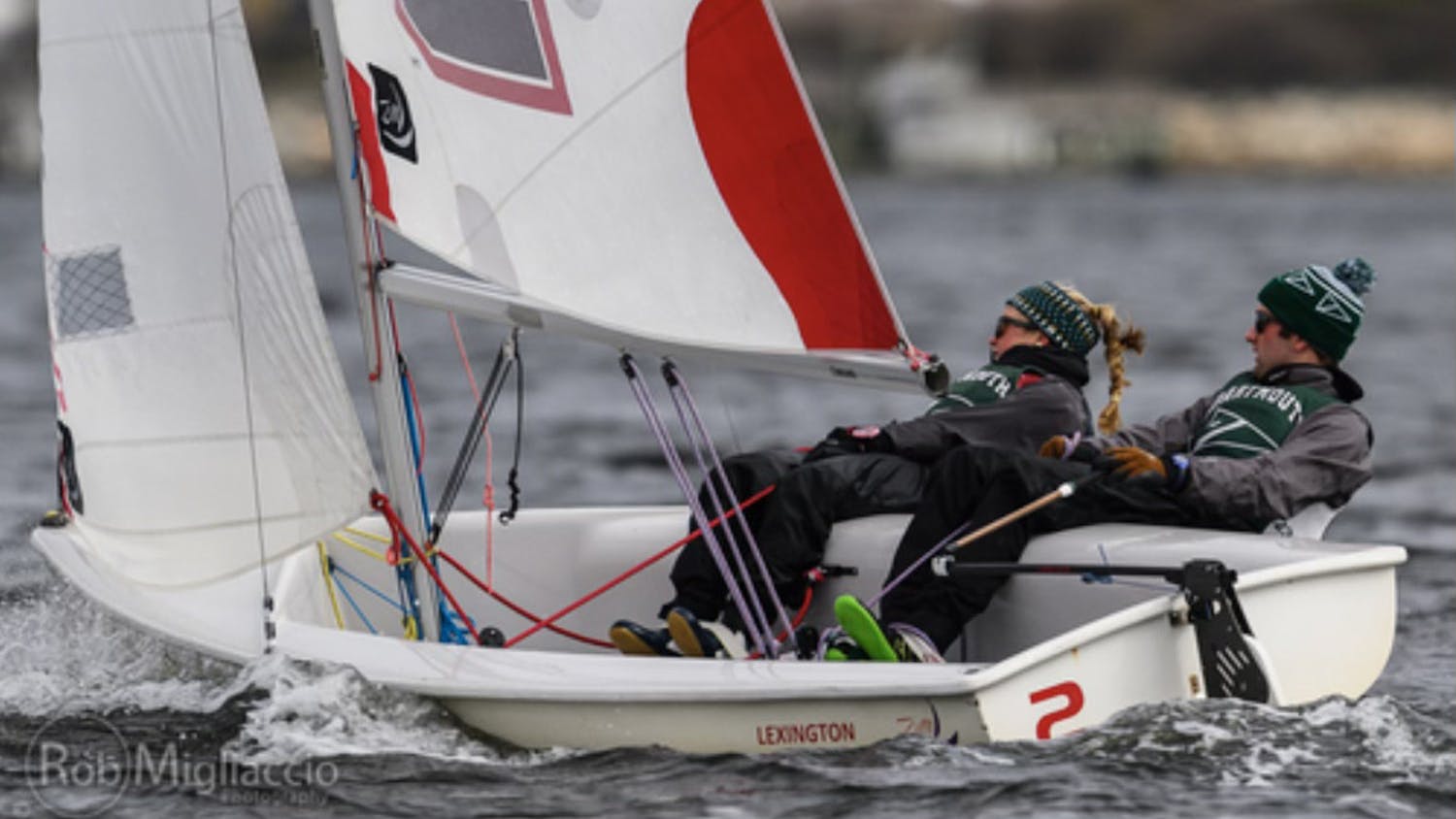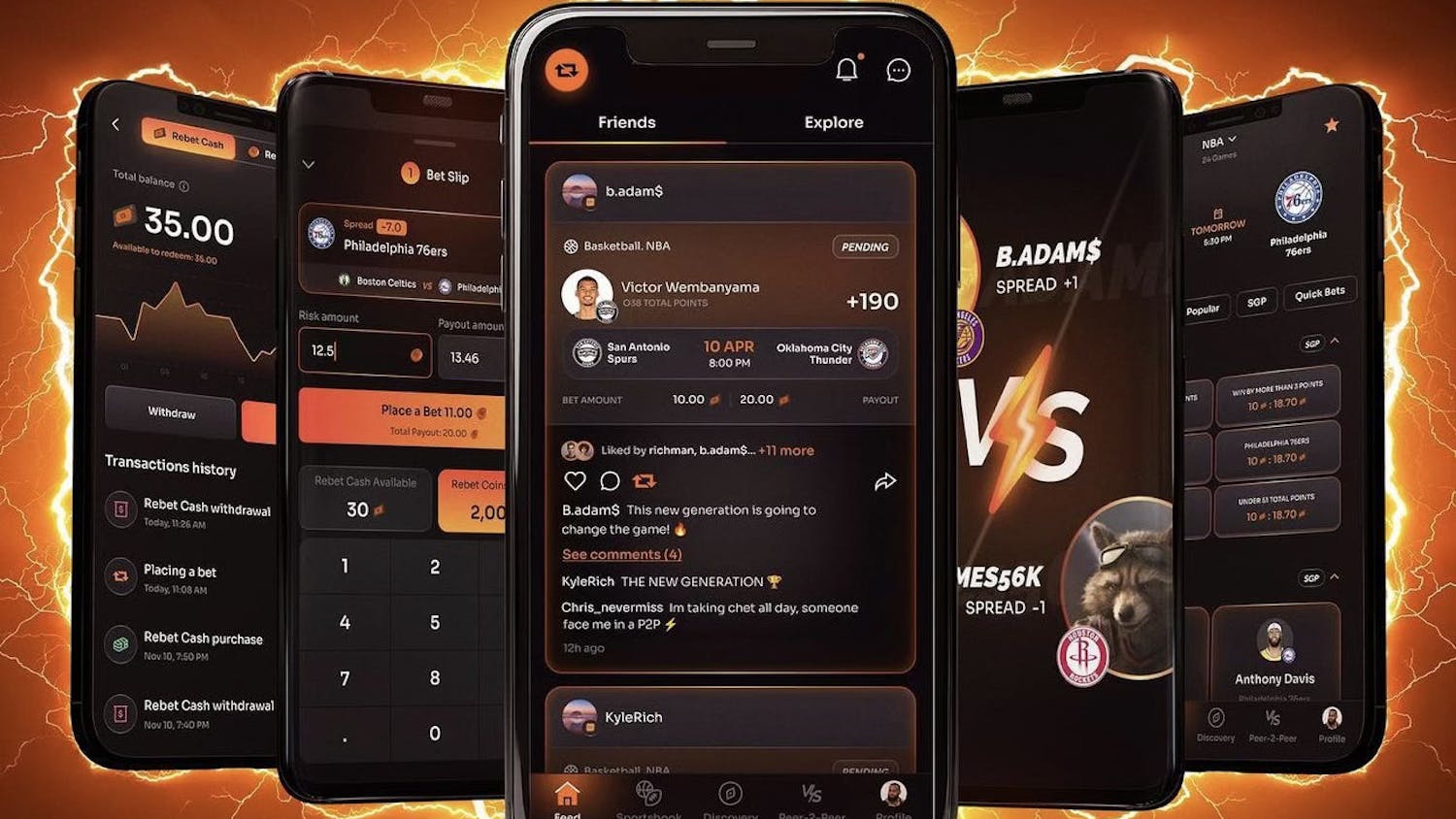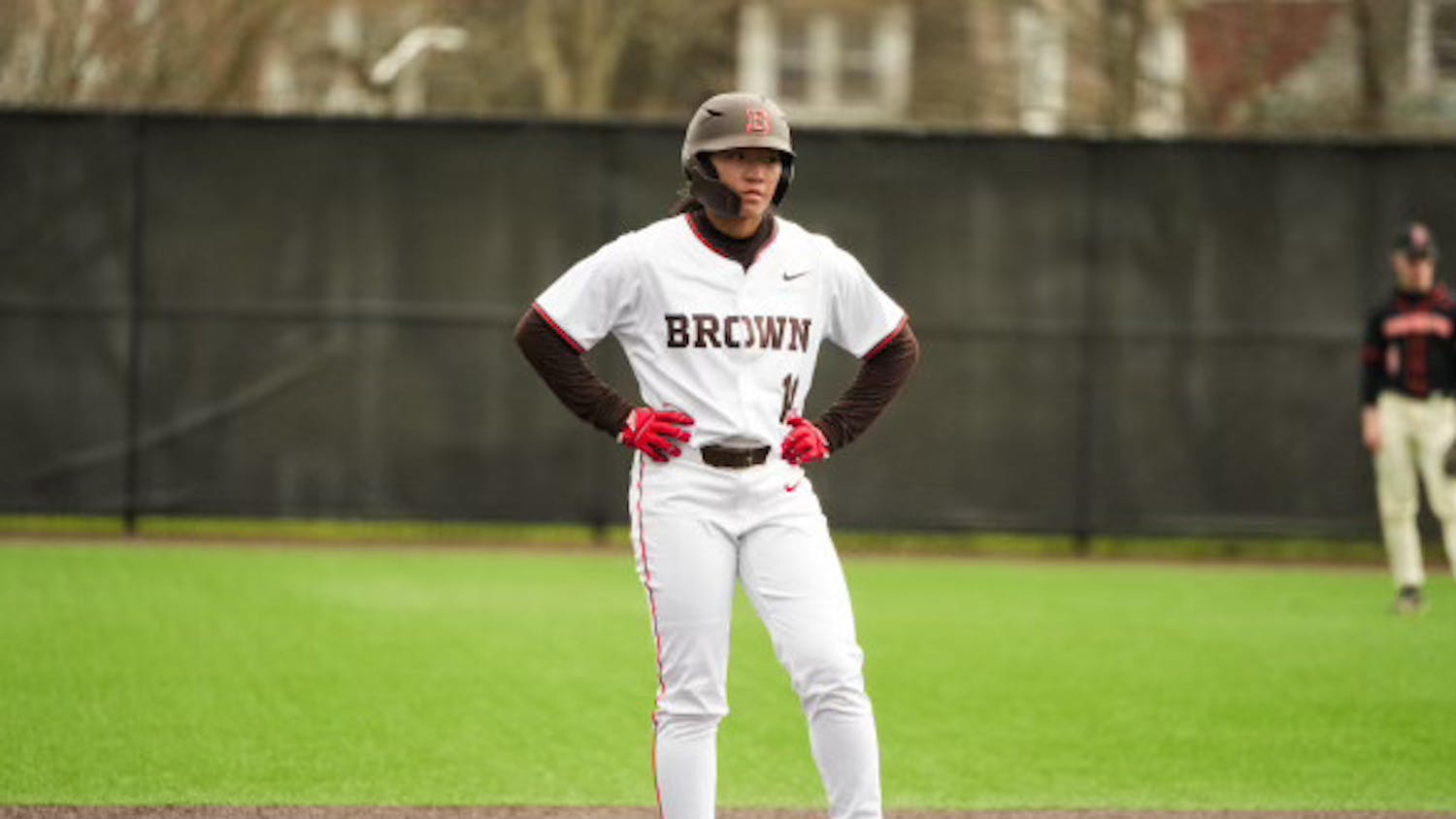In the first half of the 2016-2017 men’s hockey season, Dartmouth did not capitalize on its man advantages. After going 0-for-5 on the power play against the University of Michigan, and 0-for-6 against Cornell University, registering just four shots on the man-advantage and surrendering a short-handed goal to the Big Red, it was evident that something was not right. Even an astonishing eight power-play opportunities was not enough for Dartmouth against Colgate University, despite defeating the visiting Red Raiders 2-0. For the first seven games of the season, the Big Green power-play unit yielded a flurry of incomplete passes, turnovers and a surprisingly low number of quality scoring chances. Up until the Big Green’s eighth game of the season at Robert Morris University on Saturday, Nov. 26, 2016 — during which Dartmouth netted its first and second power-play goals of the season — the Big Green was an astonishing 0-for-42 on man-up opportunities.
Though Dartmouth players and coaches were well aware of the dismal special teams performances, there was little worry about the failure to convert on the man-advantage. After the team’s victory against Colgate, head coach Bob Gaudet ’81 seemed unfazed by the statistically poor performances on power-play opportunities.
“I would not say that it’s a concern right now,” Gaudet said. “It is just something that may take some time. What is going to happen is that in one of the upcoming games, we will score a few goals on the power play and hopefully that gives us some more confidence. It is something that is just going to get better with time.”
Perhaps Gaudet has not been given enough credit for his work with a young squad featuring 11 freshmen, and Dartmouth fans should not have expected the chemistry to click right away, particularly on the power play. The Big Green lineup features line combinations of both under- and upperclassmen on a nightly basis, and it would be foolish to expect a freshman with limited experience in the Dartmouth system to become immediately accustomed to his older teammates’ playing styles. This is particularly relevant for creating a successful power-play unit, which requires crisp passing and puck movement, as well as movement away from the puck as the team tries to line up the perfect scoring opportunity.
It was against Robert Morris in late November that Dartmouth finally found its much-needed rhythm on the power-play, and in its last ten games, the Big Green has been spectacular on the man-advantage. In 34 power-play opportunities, beginning with the team’s victory over in-state rival University of New Hampshire, Dartmouth has converted ten times with the extra man, a rate of 29.4 percent. The man-up unit has been among the nation’s top performers during this time period. To put this statistic in perspective, Harvard University leads the nation in this category with a conversion rate of 28.6 percent thus far in the season. The team’s recent man-up performance has lit up the Big Green stat sheet. Troy Crema ’17 has five of the team’s 10 power-play tallies, which places him in a tie for sixth in the nation and third among ECAC players.
Assistant captain Grant Opperman ’17 and Corey Kalk ’18 trail Crema with two power-play goals apiece. It was also on a man-advantage that Clay Han ’20 recorded his second collegiate goal in a 7-4 loss to University of Massachusetts Lowell in the Ledyard Classic final.
So, what has been the difference maker for Dartmouth? Has it been better chemistry, better passing and shot selection or better rhythm as the season progressed?
According to first-year forward Shane Sellar ’20, the recent success on the power play has been a combination of a few factors.
“I do not think it is a chemistry thing,” Sellar said. “We just figured out what we have to do on the power play, and that is make simple plays. We are executing good passes and getting people in front. We knew that once we got one the floodgates would open.”
Emphasis on simple plays is key. But simple does not mean that the Big Green’s unit has been any less fun to watch. In the past few games, we have seen Crema and Opperman unload canisters from the bottom of the left circle, nifty passing from Alex Jasiek ’19 and more shots on target from Cam Roth ’19, Han and Connor Yau ’19. Off-puck movement has become more noticeable, and most importantly, the movement appears coordinated and has kept opposing penalty-kill units off balance.
While it had become frustrating for many to witness the confusion of the Big Green power-play unit early in the season, it has clearly turned a corner. Perhaps it was just time, as Gaudet and Sellar believe. There is no doubt, however, that it would have taken the nine freshman skaters more time to become acclimated to the speed of college hockey, Dartmouth’s system and their teammates’ style of play. What is most apparent is that Dartmouth’s power-play struggles have subsided.




